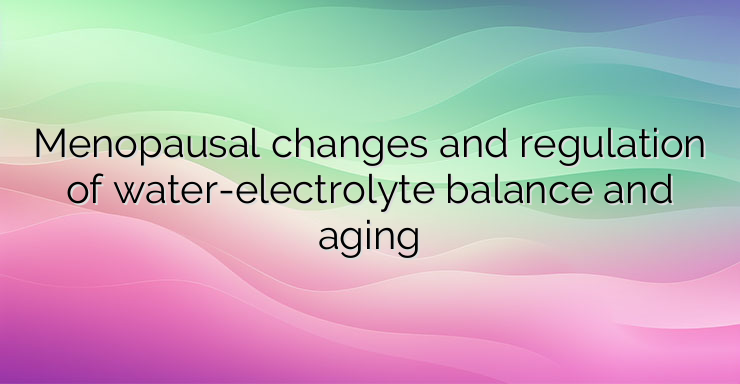The stages of the transition to menopause are classified by changes in menstrual bleeding accompanying changes in pituitary gonadotropin follicle-stimulating hormone. The transition to menopause is characterized by wide variability in both follicle-stimulating hormone and estradiol blood levels, so changes in circulating levels of these hormones are not consistent indicators of menopausal status during perimenopause. During menopause, the ovaries produce less estrogen, and these changes in estrogen exposure have important effects on most tissues in the body. Although postmenopausal women have exhausted their supply of follicles capable of developing into a mature egg, the pituitary gland continues to produce follicle-stimulating hormone, and this production continues throughout life. Interestingly, both estrogen exposure and menopausal gonadotropin levels can be elevated by conditions such as obesity and insulin resistance. Hormone therapy is the primary treatment for vasomotor symptoms associated with menopause. Progesterone is given to women who have not had a hysterectomy to avoid endometrial hyperplasia, which can progress to endometrial carcinoma. It is important to distinguish between the physiological effects of synthetic estrogens and progestogens compared to endogenously produced estradiol and progesterone. In the context of water-electrolyte balance regulation, for example, progesterone has a high affinity for the mineralocorticoid receptor and competes with aldosterone for this receptor. Mainly through this mechanism, progesterone increases sodium excretion and may prevent water retention associated with estrogens. Most progestins do not have this antimineralocorticoid effect, so they have little effect on the water- and sodium-retaining properties of estrogens. Thus, it has been suggested that this property of progestins may contribute to weight gain. Newer synthetic progestogens, such as drospirenone, have similar pharmacodynamics to progesterone and may be effective aldosterone antagonists. The route of administration of these hormones may also influence physiological responses. Estrogens are administered orally, as a subcutaneous implant, vaginal gel, or transdermal patch. The effects of different routes of delivery have important physiological, metabolic and cardiovascular effects in women, although the effects of different routes of administration on the regulation of water-electrolyte balance have not been studied. Both estrogens and progestogens can affect the nervous and hormonal systems that control thirst, fluid intake, sodium “appetite,” kidney function, and sodium regulation. Regardless of menopause, aging has important effects on fluid balance. It has been shown that there is an age-related dulling of the sensation of thirst. The most important is,that restoration of body fluid homeostasis after dehydration or water loading is slower in the elderly than in the younger, most likely due to slower renal function. Recent studies on this topic demonstrate that osmoreceptor signaling that elicits the sensation of thirst remains intact in older individuals, but sensitivity to thirst, to extracellular volume change, is reduced in postmenopausal women. This indicates that volume sensing mechanisms are impaired in older adults. Conversely, an older body excretes water more slowly than a younger body, so aging also increases the risk of hyponatremia. References: 1. Arieff AI, Ayus JC. Pathogenesis of hyponatremic encephalopathy. Curr Concepts. Chest. 2. Ayus JC, Arieff AI. Brain damage and postoperative hyponatremia: the role of gender. Neurology. 3. Ayus JC, Wheeler JM, Arieff AI. Postoperative hyponatremic encephalopathy in menstruating women. An Intern Med. 4. Bergeron ME, Ouellet P, Bujold E, et al. The impact of anesthesia on glycine absorption in operative hysteroscopy:


Leave a Reply